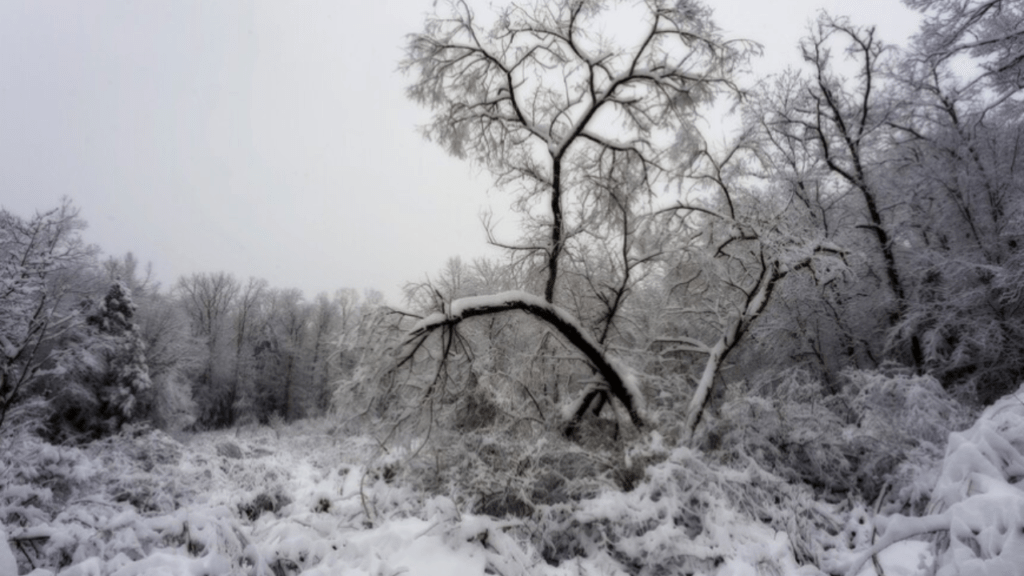
Winter Appearance of Sycamore Trees
As winter’s chill settles in and the landscape undergoes its seasonal transformation, few sights are as captivating as the majestic sycamore tree in winter. With its towering stature and distinctive bark, the sycamore stands out against the backdrop of snow-covered branches and frost-kissed landscapes. In this article, we delve into the enchanting world of sycamore trees in winter, exploring their unique features, ecological significance, and cultural importance.
The winter appearance of sycamore trees is truly unique and captivating. One of the most striking features of these trees during the winter months is their distinctive mottled bark, which peels away to reveal a smooth, creamy white layer underneath. This gives sycamore trees a beautiful, almost marbled appearance that stands out against the stark backdrop of the winter landscape. Additionally, sycamore trees have a sturdy and robust structure that remains striking even after the leaves have fallen, adding interest and beauty to the winter scenery.
In order to properly care for sycamore trees during the winter, it’s important to ensure that they receive adequate moisture and protection from harsh winter conditions. Mulching around the base of the tree can help to retain moisture and protect the roots from freezing temperatures. Additionally, pruning any dead or damaged branches can help to promote healthy growth and maintain the overall appearance of the tree.
Identifying sycamore trees in the winter can be done by looking for their distinctive bark, which sets them apart from other trees in the area. Their mottled, peeling bark is a sure sign that you are looking at a sycamore tree. By appreciating and caring for these beautiful trees in the winter, you can add interest and beauty to your local landscape while also ensuring the health and vitality of these unique and resilient trees.
Table of Contents
ToggleIntroduction to Sycamore Trees
Sycamore trees are known for their sturdy and robust structure, with striking bark that remains interesting even after the leaves have fallen, adding beauty to the winter scenery. It’s important to care for sycamore trees during the winter by ensuring they receive adequate moisture and protection from harsh conditions. Mulching around the base of the tree can help retain moisture and protect the roots from freezing temperatures. Pruning any dead or damaged branches can promote healthy growth and maintain the tree’s appearance. Sycamore trees can be identified in the winter by their distinctive mottled, peeling bark. By appreciating and caring for these beautiful trees in the winter, you can add interest and beauty to your local landscape while ensuring the health and vitality of these unique and resilient trees.
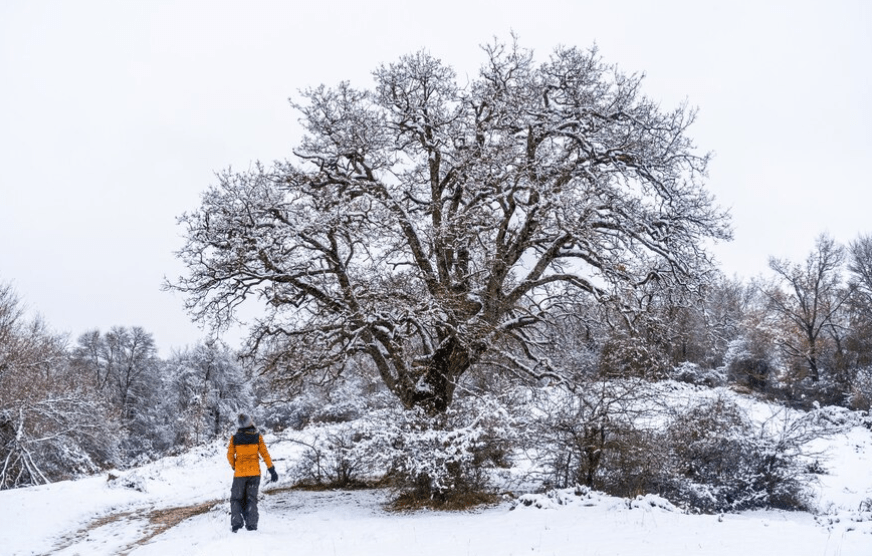
Overview of Sycamore Trees
Sycamore trees are known for their sturdy and robust structure, which remains striking even after the leaves have fallen. They add interest and beauty to the winter scenery. Proper care for sycamore trees during the winter involves ensuring they receive adequate moisture and protection from harsh winter conditions. Mulching around the base of the tree can help retain moisture and protect the roots from freezing temperatures. Pruning any dead or damaged branches can promote healthy growth and maintain the overall appearance of the tree. Sycamore trees are identifiable in the winter by their distinctive bark, which sets them apart from other trees in the area with its mottled, peeling appearance. By appreciating and caring for these beautiful trees in the winter, you can add interest and beauty to your local landscape while ensuring the health and vitality of these unique and resilient trees.
Importance of Sycamore Trees
Sycamore trees are important for several reasons. They provide essential habitat and food for a variety of wildlife, including birds and small mammals. Their large, sturdy branches offer nesting sites and shelter for animals, and their seeds are a food source for many species. Sycamore trees also play a crucial role in stabilizing soil and preventing erosion, particularly along riverbanks and streams. Their extensive root systems help to hold the soil in place and reduce the risk of flooding. Additionally, sycamore trees contribute to the overall beauty and biodiversity of the environment, adding interest and aesthetic value to the landscape. By preserving and caring for these trees, we can ensure the health and vitality of local ecosystems and enhance the natural beauty of our surroundings.
Winter Adaptations of Sycamore Trees
Leaf Drop

During the winter, sycamore trees go through a process called leaf drop. This is a natural adaptation that helps the tree conserve energy and resources during the colder months. As the days get shorter and temperatures drop, the tree begins to shut down its processes for producing food, which includes shedding its leaves. This allows the tree to focus its energy on maintaining its essential functions and preparing for the coming spring. While the sight of a bare sycamore tree may seem stark, it is actually a sign of the tree’s strength and ability to thrive in changing conditions. By understanding and appreciating the winter adaptations of sycamore trees, we can better care for and support these important and resilient members of our local ecosystems.
Bark Characteristics
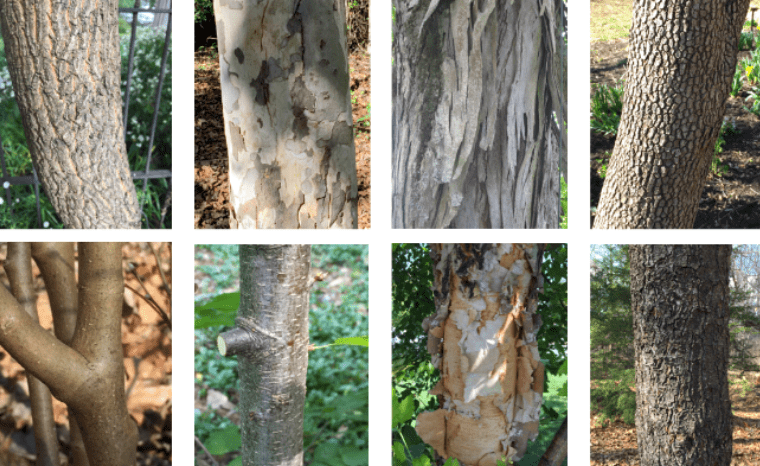
Sycamore trees have distinctive bark characteristics that make them easy to identify. Their bark is mottled and smooth, with patches of white, green, and brown coloring. As the tree matures, the bark becomes more textured and peels off in large, papery flakes. This unique bark texture and coloring make sycamore trees stand out in the landscape and provide important habitat for wildlife. The peeling bark also helps protect the tree from pests and diseases, making it a resilient and valuable species in our environment. By recognizing and appreciating the bark characteristics of sycamore trees, we can better understand their role in our ecosystems and work to preserve and protect them for future generations.
Seed Dispersal
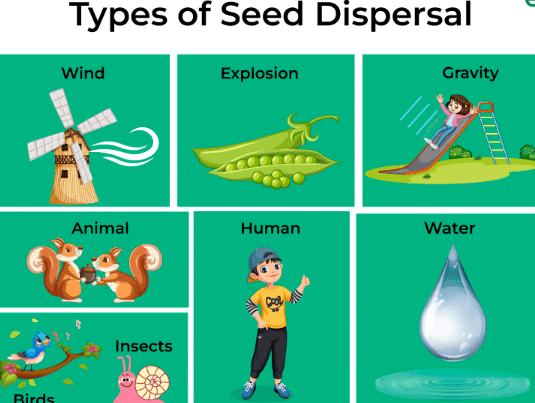
is an important process for the survival and reproduction of plants. Sycamore trees have a unique method of seed dispersal, as their seeds are encased in small, round clusters that are attached to a fluffy material that allows them to be carried by the wind. This allows the tree to spread its seeds over a wide area, increasing the chances of successful germination and growth. The fluffy material also provides insulation for the seeds, protecting them from harsh winter conditions and increasing their chances of survival.
By understanding the seed dispersal methods of sycamore trees, we can appreciate their adaptability and resilience in the face of changing environmental conditions. This knowledge can also help us to support and protect these important members of our local ecosystems, ensuring their continued presence for future generations to enjoy.
Winter Beauty of Sycamore Trees
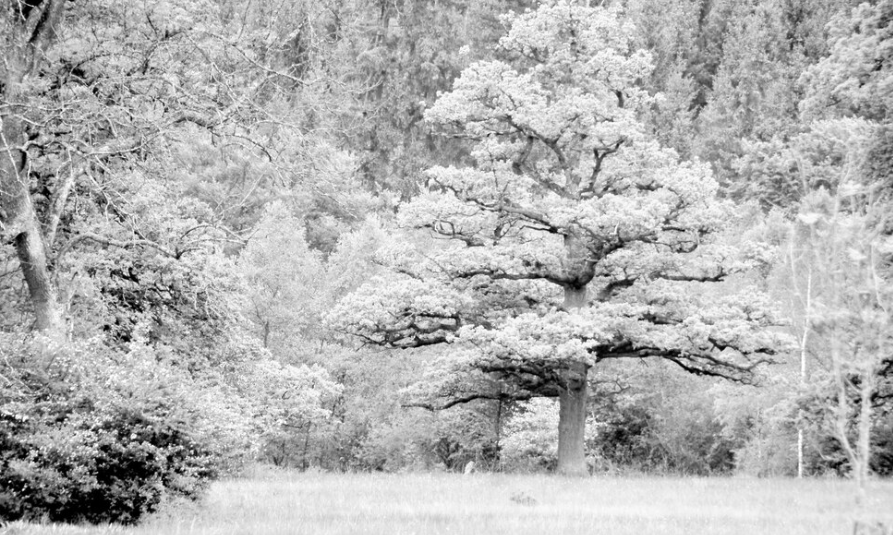
Silhouette and Structure
The unique bark texture and coloring of sycamore trees make them stand out in the landscape and provide important habitat for wildlife. The peeling bark also helps protect the tree from pests and diseases, making it a resilient and valuable species in our environment. By recognizing and appreciating the bark characteristics of sycamore trees, we can better understand their role in our ecosystems and work to preserve and protect them for future generations.
Seed dispersal is an important process for the survival and reproduction of plants. Sycamore trees have a unique method of seed dispersal, as their seeds are encased in small, round clusters that are attached to a fluffy material, allowing them to be carried by the wind. This allows the tree to spread its seeds over a wide area, increasing the chances of successful germination and growth. The fluffy material also provides insulation for the seeds, protecting them from harsh winter conditions and increasing their chances of survival. By understanding the seed dispersal methods of sycamore trees, we can appreciate their adaptability and resilience in the face of changing environmental conditions and work to support and protect these important members of our local ecosystems.
In the winter, sycamore trees display a unique beauty with their silhouette and structure. The bare branches against the winter sky create a striking visual contrast, adding interest and character to the landscape. By taking the time to appreciate the winter beauty of sycamore trees, we can develop a deeper connection to the natural world and gain a greater understanding of the importance of these trees in our environment.
Bare Branches
are a common sight in the winter months as many trees lose their leaves. This process, known as abscission, is a natural response to the changing seasons. While it may seem like the trees are dormant or lifeless, they are actually preparing for the colder weather and conserving energy. During this time, trees focus on storing nutrients and water in their roots, which helps them survive the winter.
Additionally, bare branches play an important role in the natural beauty of the winter landscape. They create a striking silhouette against the sky and add a sense of depth and texture to the scenery. Many people find the stark contrast of the bare branches against the winter sky to be visually captivating and appreciate the unique beauty they bring to the environment.
It’s also important to note that bare branches are a crucial part of the ecosystem. They provide shelter and nesting sites for birds and other wildlife, as well as food sources such as insects and seeds. By appreciating the beauty of bare branches, we can develop a deeper understanding and connection to the natural world around us.
Winter Wildlife Habitat
During the winter, the natural habitat of wildlife changes as well. Many animals, such as birds and mammals, rely on bare trees and shrubs for shelter and protection. The open branches and spaces between the branches provide a safe place for animals to hide from predators and harsh weather. Additionally, the lack of leaves on trees makes it easier for birds to find and access food sources such as insects and seeds. It’s important to consider the impact of winter on wildlife and to create a welcoming environment for them in our own outdoor spaces. You can help by providing bird feeders, nesting boxes, and even leaving some leaf litter and fallen branches in your yard for small animals to use as shelter. By understanding and appreciating the importance of bare trees and shrubs for wildlife habitat, we can take steps to support and protect these essential ecosystems during the winter months.
Cultural and Historical Significance
Symbolism
Bare branches and trees have a significant cultural and historical significance. In many cultures, they are often used as symbols of resilience, strength, and endurance. The bare branches and trees can also symbolize the cycle of life and the passage of time. In some cultures, they are seen as a representation of wisdom and knowledge gained through experience. By understanding the symbolism and cultural significance of bare trees, we can gain a deeper appreciation for the natural world and our connection to it.
Historical Uses
Bare branches and trees have a significant cultural and historical significance. In many cultures, they are often used as symbols of resilience, strength, and endurance. The bare branches and trees can also symbolize the cycle of life and the passage of time. In some cultures, they are seen as a representation of wisdom and knowledge gained through experience. By understanding the symbolism and cultural significance of bare trees, we can gain a deeper appreciation for the natural world and our connection to it. Additionally, the lack of leaves on trees makes it easier for birds to find and access food sources such as insects and seeds. It’s important to consider the impact of winter on wildlife and to create a welcoming environment for them in our own outdoor spaces. You can help by providing bird feeders, nesting boxes, and even leaving some leaf litter and fallen branches in your yard for small animals to use as shelter. By understanding and appreciating the importance of bare trees and shrubs for wildlife habitat, we can take steps to support and protect these essential ecosystems during the winter months.
Urban and Landscape Applications
Urban Plantings
In many urban areas, planting trees and shrubs is an important aspect of city planning and landscape design. Urban plantings provide numerous benefits such as reducing air pollution, providing shade, and creating a more aesthetically pleasing environment. Trees and shrubs also play a crucial role in improving the overall quality of life in urban areas by providing spaces for recreation and relaxation. Additionally, urban plantings help to mitigate the urban heat island effect by providing shade and cooling the surrounding environment. By incorporating urban plantings into city planning and landscape design, we can create more sustainable and vibrant urban spaces for both people and wildlife.
Landscape Design
is an important aspect of creating outdoor spaces that are not only visually appealing but also functional and sustainable. When designing a landscape, it’s important to consider factors such as the local climate, soil conditions, and the needs of the plants and wildlife that will inhabit the space. By carefully selecting and arranging plants, trees, and shrubs, landscape designers can create beautiful and environmentally friendly outdoor spaces. Additionally, incorporating elements such as water features, pathways, and outdoor seating areas can enhance the overall aesthetic and usability of the landscape. Overall, landscape design is an essential part of creating outdoor environments that are both beautiful and beneficial for wildlife and people.
Maintenance Tips
for urban plantings are important to ensure their continued health and vitality. Regular watering, especially during dry periods, is essential to keep plants and trees thriving. It’s also important to regularly check for pests and diseases, and to address any issues promptly to prevent further damage. Regular pruning and trimming of trees and shrubs will help to maintain their shape and promote healthy growth. Additionally, adding mulch around the base of plants can help to retain moisture and suppress weed growth. Overall, proper maintenance of urban plantings is crucial to preserving their benefits and beauty in urban environments.
Conservation and Management
Environmental Benefits
Landscaping and urban plantings offer a number of environmental benefits. By carefully selecting and arranging plants, trees, and shrubs, landscape designers can create beautiful and environmentally friendly outdoor spaces. These green spaces can help to reduce air and noise pollution, provide habitat for wildlife, and improve overall air quality. Additionally, incorporating elements such as water features, pathways, and outdoor seating areas can enhance the overall aesthetic and usability of the landscape, creating outdoor environments that are both beautiful and beneficial for wildlife and people.
Maintenance Tips
Proper maintenance of urban plantings is important to ensure their continued health and vitality. Regular watering, especially during dry periods, is essential to keep plants and trees thriving. It’s also important to regularly check for pests and diseases, and to address any issues promptly to prevent further damage. Regular pruning and trimming of trees and shrubs will help to maintain their shape and promote healthy growth. Additionally, adding mulch around the base of plants can help to retain moisture and suppress weed growth. Overall, proper maintenance of urban plantings is crucial to preserving their benefits and beauty in urban environments.
In summary, landscaping and urban plantings play a crucial role in creating beautiful, environmentally friendly outdoor spaces. By incorporating green elements and proper maintenance, these spaces can provide a range of environmental benefits while enhancing the overall aesthetic and usability of urban environments.
Management Practices
Proper management practices are essential for maintaining the health and vitality of urban plantings. Regular watering, especially during dry periods, is crucial to ensure that plants and trees continue to thrive. It is also important to regularly inspect for pests and diseases and address any issues promptly to prevent further damage. Additionally, regular pruning and trimming of trees and shrubs will help to maintain their shape and promote healthy growth. Adding mulch around the base of plants can also help to retain moisture and suppress weed growth. Overall, proper maintenance of urban plantings is crucial to preserving their benefits and beauty in urban environments. By implementing effective management practices, we can ensure that urban plantings continue to provide environmental benefits and enhance the overall aesthetic and usability of urban spaces.
Challenges and Threats
Landscaping and urban plantings face a variety of challenges and threats, including environmental stressors, such as pollution and climate change, as well as human-related issues, such as vandalism and improper maintenance. These challenges can impact the health and longevity of urban plantings, compromising their ability to provide environmental benefits and enhance the aesthetic appeal of urban spaces. In order to overcome these challenges, it is important to implement sustainable and resilient landscaping practices, as well as community engagement and education to promote the value of urban plantings. By addressing these challenges and threats, we can ensure the continued success and benefits of landscaping and urban plantings in our communities.
In conclusion, sycamore trees have a beautiful and distinctive appearance during the winter months, with their mottled, peeling bark standing out against the snow. It’s important to properly care for them during this season, ensuring they have enough water and protection from harsh weather conditions. Additionally, identifying sycamore trees in the winter can be done by looking for their unique bark and the shape of their branches. Taking the time to appreciate and care for these trees during the winter can add beauty to your outdoor space.
Frequently asked questions And Answer
Yes, sycamore trees are deciduous and will lose their leaves in the winter.
In the winter, sycamore trees have a bare appearance with their branches and trunk exposed.
One distinguishing feature of sycamore trees in the winter is their mottled bark, which is particularly noticeable when the leaves have fallen.
Yes, sycamore trees are hardy and can survive in cold weather conditions.
Sycamore trees do not bloom in the winter. Their flowering typically occurs in the spring.
In general, sycamore trees do not require special care in the winter. However, it is important to ensure that they are well-watered and protected from harsh winter winds.
It is generally best to plant sycamore trees in the fall or spring, as planting in the winter may expose them to additional stress from the cold.
Sycamore trees provide important habitat and food sources for wildlife in the winter, including birds and small mammals
